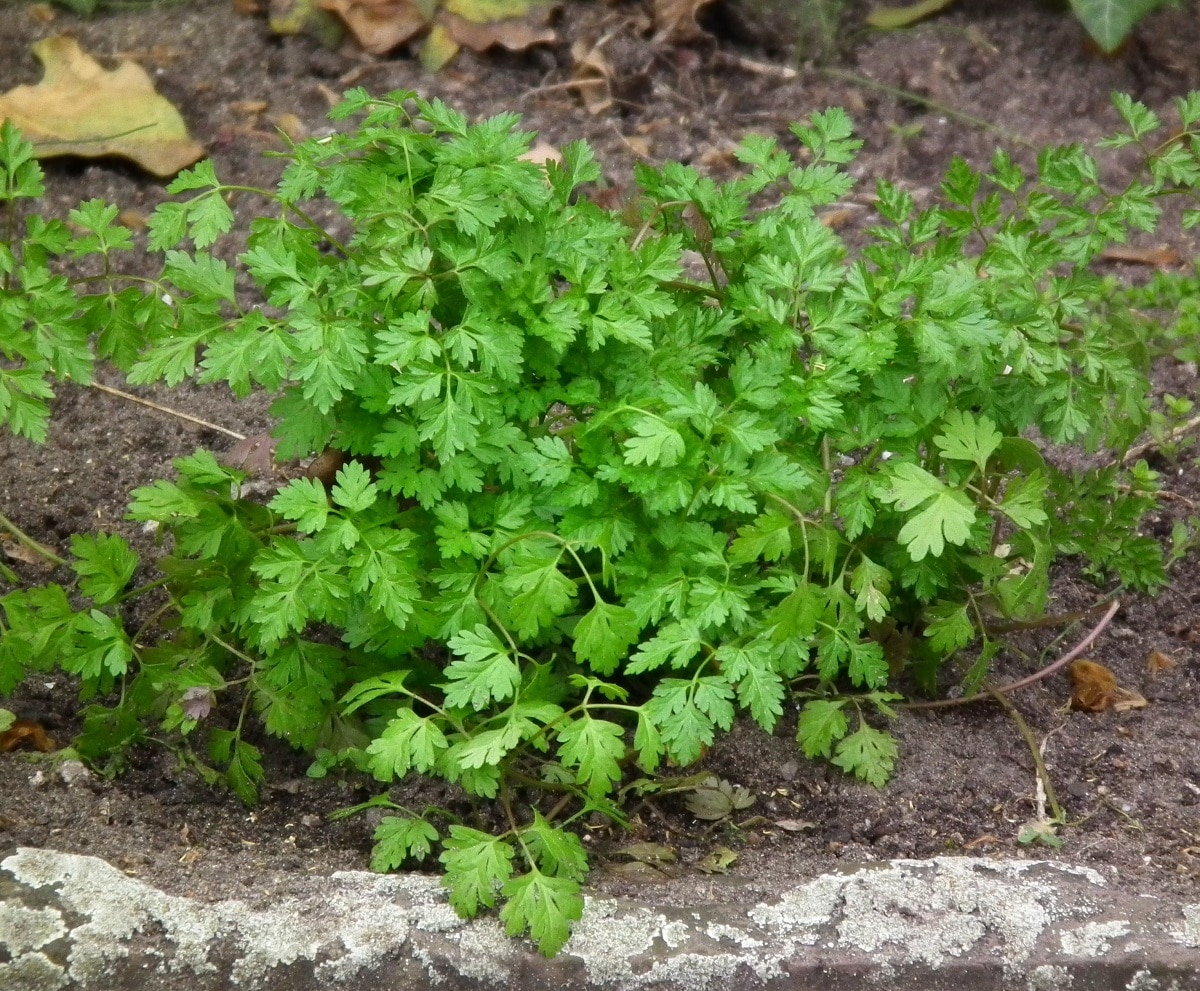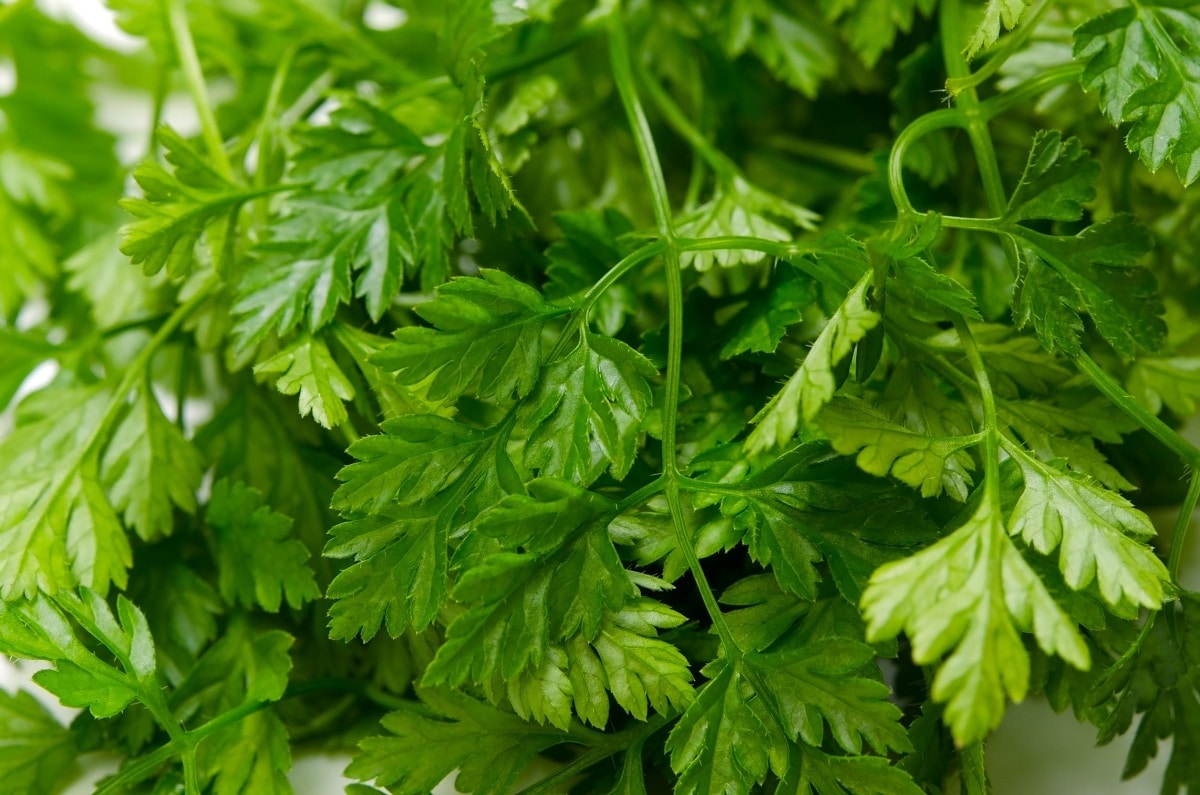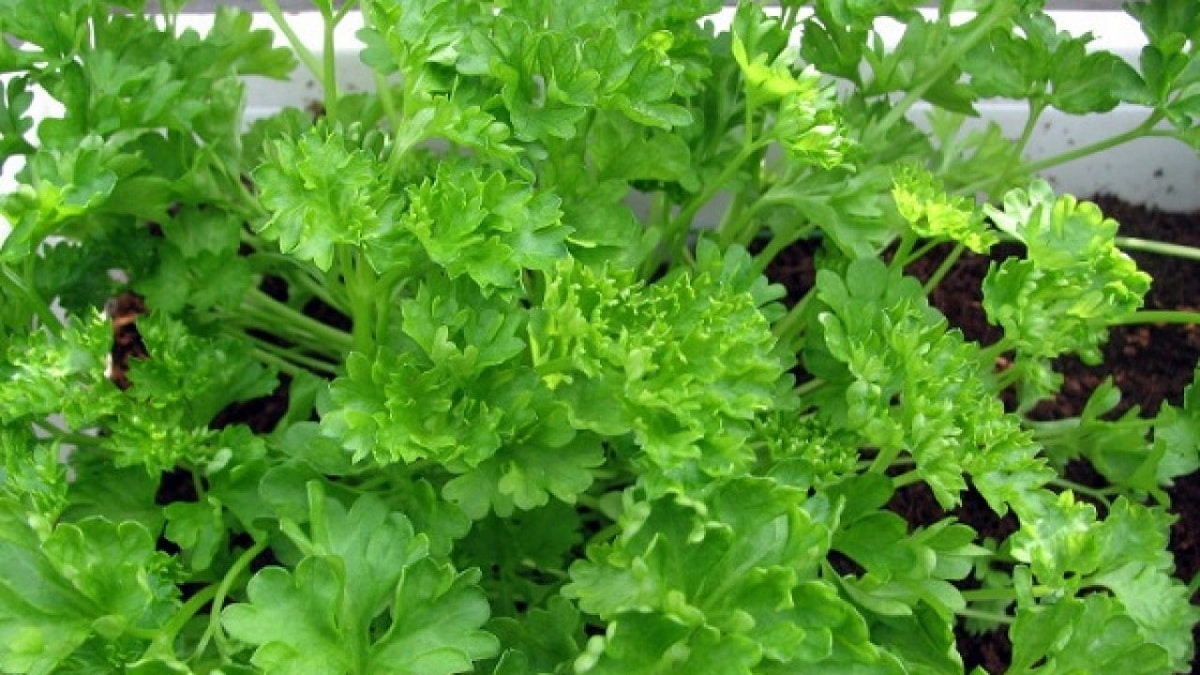
Today we are going to talk about a type of plant whose properties have been planted in many places around the world. Its about chervil. Its scientific name is Anthriscus cerefolium and it is very similar to parsley because of its elongated green stems. It stands out mainly for having a pleasant and sweet aroma that is similar to that of anise. Its consumption is not very common in Spain despite the fact that it is cultivated throughout most of Europe.
In this article we are going to tell you all the characteristics, properties and cultivation of chervil.
Key features

It is an annual cultivated herbaceous plant that usually grows between 40-70 centimeters tall if it grows in good conditions. It usually gives off a quite pleasant aroma that reminds us of anise. Although it is not certain, it is said to be native to the Caucasus and the Middle East. Thanks to the Romans, the plant spread throughout the West until it was frequently used as a cooking herb. It is especially used in different recipes of French cuisine dishes. And it is one of the plants that is part of the mixture of spices of fine herbs.
The stems are about 30-40 centimeters high, they are very thin, branchy, have holes and a striated texture. Its leaves are trimmed in lanceolate lobes although some of them may be curled. It has tiny flowers and plants that do not have any ornamental aspect. The plant does not serve for decoration, so its main use is the kitchen. As for the fruit, it is one centimeter long and has a delegate ridge in the shape of a beak and when it ripens it acquires a black color.
Chervil uses and properties

The main function it has is garnish and add a touch of extra flavor to meals, although it is true that it is a plant very rich in healthy nutrients for the same. This means that it has been thoroughly studied to know its properties well. In countries like France and Germany it has a somewhat more widespread consumption, especially from spring. And it is that it is the time when its season starts and soups and sauces with this herb begin to be prepared.
They can also be used to accompany various types of dishes whose main ingredient is meat and fish. At the same time it is one of the spices that is part of the fine herbs. It only has a large caloric intake of 45 calories per 100 grams having a good supply of fiber and iron.
Regarding its properties, chervil stands out for having a synthetic and purifying character. This reduces the accumulation of fluids in the body and eliminate toxins present in our body. Thanks to this we can increase the rate of urine being beneficial for the kidneys. Although it can be used in low amounts, it is a digestive food that helps make meals less heavy. As it contains a large amount of fiber, it helps regulate intestinal transit, which reduces constipation.
On the other hand, this plant contains vitamin C that serves to protect the immune system. It repairs tissues and provides oxygen to cells while also protecting it from attack by free radicals.
Chervil cultivation

Chervil can be seen in our home if we have a garden or several pots. It is interesting to sow to have a simple list in our kitchen. You just have to take into account some aspects that we are going to list below. First of all is the type of soil that we have to prepare for sowing. As with chives and parsley, it requires a moist soil that has good drainage. Drainage is the ability of the soil to absorb irrigation or rain water. If the soil does not have good drainage, rain or irrigation water can begin to be stored and create puddles. Chervil does not tolerate puddles, so it can end up rotting.
We must have a soil rich in organic matter and the pH must be around 6 and 7. It can be grown in a pot although it must be transplanted later. This plant requires a climate that is not very dry at all in order to maintain constant humidity. If it is grown in a place without humidity, it is better to put it in semi-shade since the sun can lead to too much gleaning and not being able to bear it. The advantage is that it is a plant that adapts well to the cold and can be sown throughout the year. Despite this, it is recommended to sow mainly between the months of March and November if we want to have better results.
If you want to have chervil prepared in summer, it is best to sow in early spring. If you want it for winter you must sow it at the end of summer. Irrigation should be almost constant to prevent the plant from being spiked. It needs to be increased in warmer areas to maintain humidity more easily.
Pests, diseases and harvest
This plant is somewhat more vulnerable to some pests such as aphids, fungi and snails. If irrigation is overused and the soil has an extra nitrogen and the fungus can appear. You just have to use potassium soap dissolved in water to remove it. Fungi can grow more easily given the large amount of moisture that this plant needs to survive. You just have to treat horsetail fungi. Lastly, chervil can be attacked by snails. Anti-slug granules and diatomaceous earth must be used to provide nutrients and fertilizers to eliminate snail and slug pests.
To collect the chervil it must be borne in mind that the plant must measure more or less about 10 centimeters to be able to cut its leaves. The stems are made in bundles and they can be kept in more ventilated places for a maximum of 8-10 weeks. If they dry out, they will lose their aromatic properties, so it may be advisable to store them in the freezer.
I hope that with this information you can learn more about chervil and its characteristics.